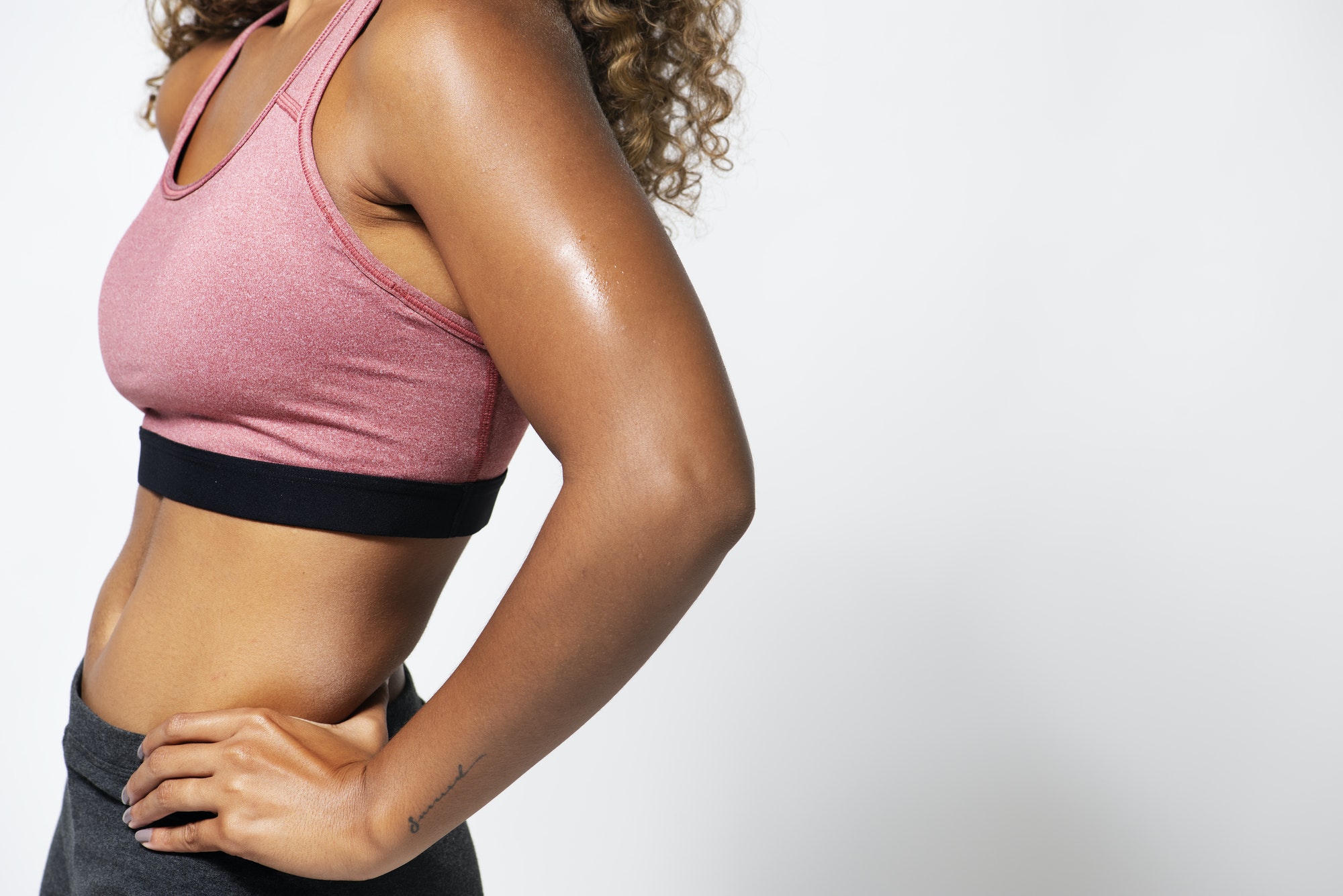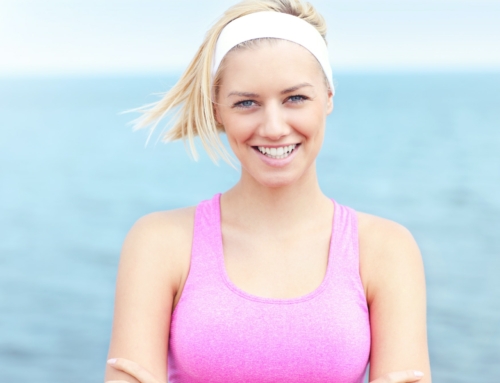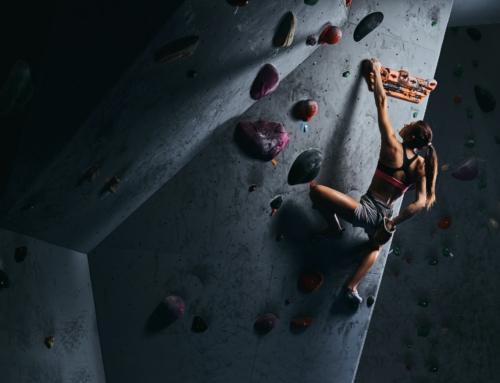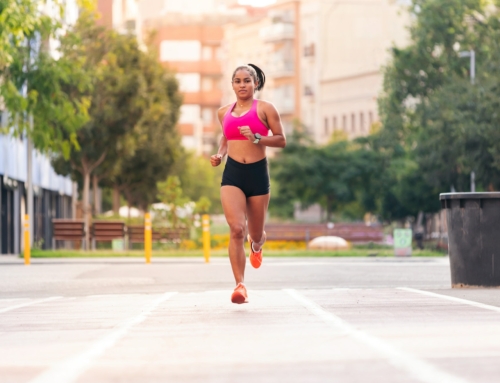A sports bra is a type of bra that provides support to a woman’s breasts during physical exercise. Regular everyday bras are more flimsy and don’t offer enough support, which can cause pain and discomfort. This type of bra is more stable and cuts down on breast movement from an aggressive workout.
Sports bras are more sturdily made with back closures or convertible straps, thick elastic or foam padding, and wider straps for better support. Some sports bras include pockets for removable padding inserts, which allow women the ability to adjust the level of support offered by the garment.
Do you need a sports bra?
Sports bras are designed to give support and comfort during physical activity such as jogging, aerobics, and weight training.
Wearing a sports bra while exercising helps reduce strain on the breasts by reducing movement of the chest. They are available in both underwire and wireless versions.
Wearing a sports bra while exercising helps reduce the risk of injuries caused by breast movement, including pain or discomfort, chafing, or breast injury. Additionally, wearing a sports bra reduces the risk of breast cancer by keeping breasts from being hit or rubbed repeatedly against the chest wall.
The debate over whether wearing a sports bra is necessary for women with smaller breasts is ongoing. Researchers have found that some benefits are experienced by all women who wear them, or at least by all women whether they experience discomfort or not.
Sports bras are designed to provide support for various levels of physical activity. Some bras are designed explicitly for low-impact activities such as yoga or Pilates, while others can be used for high-impact exercises like running or aerobic workouts. Sports bras have varying degrees of support—some types of sports bras offer more support than others. Many women find that certain sports bras work well for low-impact workouts while other bras are better suited to high-impact activities.
What are the benefits of wearing a sports bra?
A sports bra is a special type of women’s undergarment explicitly designed to offer support during exercise. Sports bras are helpful for more than just high-impact activities like running or tennis — they can also help with posture and reduce discomfort from garments like backpacks and shoulder pads.
Sports bras typically feature:
- Compression: Compression is used to hold breasts in place and prevent movement, which can cause discomfort and chafing. This is important because breasts bounce around a lot when you’re exercising but don’t always do it evenly. Compression helps ensure that all that bouncing goes where it’s supposed to go — up and forward — and doesn’t end up smacking you in the face.
- Support: Support is provided by most sports bras through the use of straps, cups, molded cups, and underwires. Some also include removable padding for increased coverage and security.
- Comfort: A well-designed sports bra will be comfortable enough to wear all day long and under different types of clothing, including your favorite T-shirt. Consider looking for a model with wider straps, as these tend to feel more comfortable than thin ones.
A sports bra isn’t necessarily best for all exercises — some low-impact workouts (like yoga or Pilates) don’t require.
How to wear a sports bra properly
When it comes to the right bra, your best friend is your sports bra. Sports bras are designed to support breasts during exercise, keep them in place and prevent painful chafing.
Here’s how to wear a sports bra properly:
- Make sure you’re wearing the right size bra. If you’re not, the cups won’t do their job of supporting your breast tissue properly.
- Wear a high-impact sports bra with every workout. These bras, often with thick straps and hook-and-eye closures in back, provide strong support for larger breasts during high-impact activities like running and aerobics. Low-impact activities like walking or yoga don’t require them.
- Choose the right style bra for your body type. The most common types are compression bras that flatten breasts, encapsulation bras that hold them in place without squishing them, and racerback bras that hold them in place while allowing movement of shoulder blades and arms to be unhindered.
- Wear the right type of clothing over your bra if you plan to wear one all day long or out in public after an intense workout. A cotton T-shirt will allow sweat to evaporate, while polyester can cause it to remain against your skin.
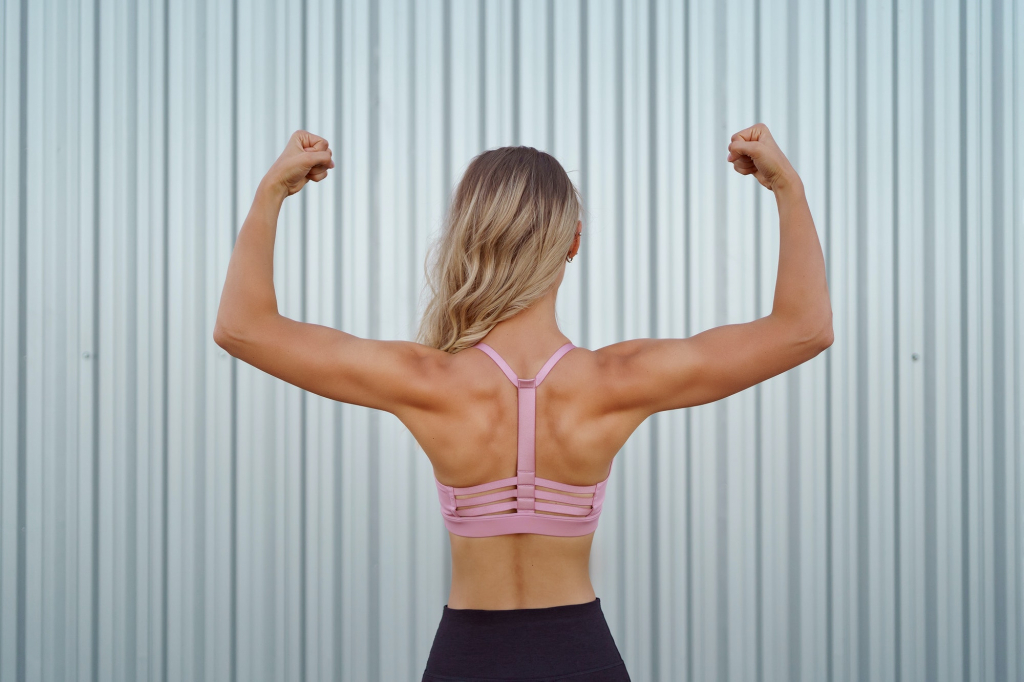
Muscular woman back in pink sports bra
Basic parts of a sports bra
There are basically three parts of a sports bra:
- The cups are there to hold everything in place. You want something that will lift your breasts without flattening them, provide enough support that you’re not bouncing all over the place, and be breathable enough that you don’t get too sweaty.
- The band is what goes around your torso, providing support and stability both up top and down low. A good band will be thick enough that it doesn’t dig into your skin or slide around on its own, but thin enough that it’s not bulky or uncomfortable.
- Seams are one of the most significant issues for people with large breasts because they can rub against the skin uncomfortably. Some brands have seams built into the cups, while others sew them to the band or sew them directly to the fabric itself. Either way, you want something smooth and seamless where possible.
Types of sports bras
There are several types of sports bras to choose from. Some sports bras are for high-impact activities, while others are for low-impact activities. Other sports bras provide side support, back support, front support, or all of the above. There are even specific bras for nursing mothers.
As you can see, there are many types of sports bras available. The type of sports bra you choose will depend on how much support you need and what type of activity you plan to do.
Here are the basics of the different types of sports bras available:
- Support Sports Bras – For medium to high impact activities where you need support, look for a bra with molded cups and adjustable straps for maximum support.
- Racerback Sports Bras – For medium-impact activities like running, hiking, aerobics, and tennis, racerback sports bras will help keep your back in place while providing enough flexibility in the shoulder straps to allow free movement.
- Minimizer Sports Bras – If your breasts aren’t supported by your regular bra, you may want to try a minimizer bra to reduce breast bounce during physical activity. These work well for low-impact activities like walking or yoga.
- Comfort Sports Bras – If you don’t like constricting bras or traditional underwire bras during physical activity, comfort sports bras may be right for you.
Conclusion about what is a sports bra
Coming to the end of the article, it is time to ask yourself, what is a sports bra? Hopefully, you have learned that women’s sports bras are essential for women who work out to avoid pain and chafing. There are many great sports bras available on the market, but finding the right one for you can be tricky. We hope this guide has helped in your search for the best sports bra.
The type of exercise you do will determine how supportive your sports bra needs to be. If you’re doing heavy-impact exercises like running or aerobics, you’ll need a pretty supportive bra to keep your girls from bouncing all over the place! But if you’re just doing light gym workouts or calisthenics, your regular everyday bra should work just fine.
Whatever kind of workout you’re doing, remember that proper support is essential when exercising or playing sport! If you’ve got an active lifestyle and workout

